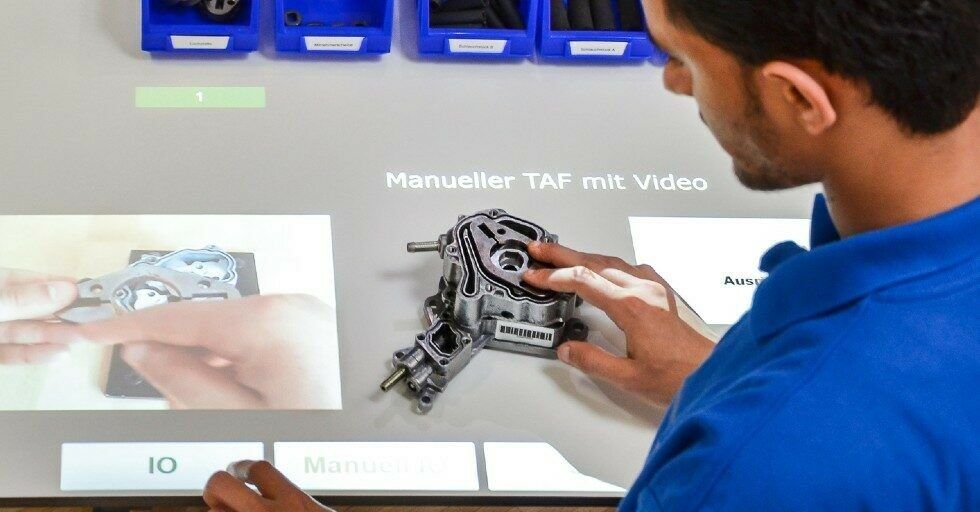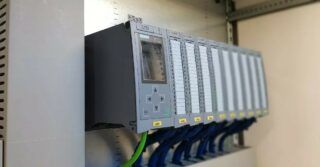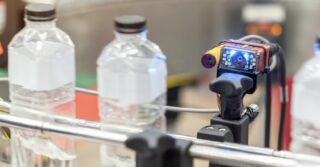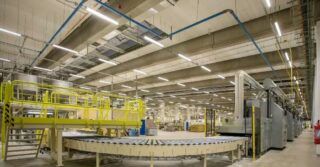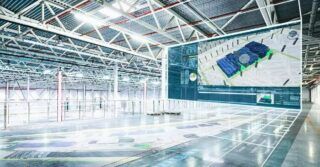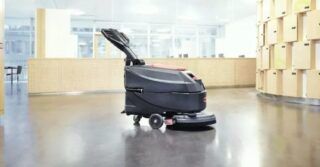The digitalisation of production is one of the most significant trends that will dominate the near future of production lines. Indicators of the level of digitalisation show that companies are beginning to move from the preparation phase to laying the foundations of digital transformation. Technologies are developing to implement this strategy at various levels of production management. One such solution is Smart Factory Assembly or digital interactive assembly instructions.
What is the Smart Factory Assembly solution?
The Smart Factory Assembly solution offered by Bossard is, in simplest terms, intelligent, interactive digital assembly instructions. It is a system that guides the assembler step-by-step through the entire assembly process of an application, suggesting the next steps, including the choice of tools and techniques, for example torque.
The instructions can be displayed on a monitor or directly on the worktop, or even on the operator’s data glasses. The system allows the integration of smart tools and even robots, calibrated to select the required assembly parameters themselves. Other systems can also be connected to it, such as pick-to-light, signalling with a light diode from which container a detail should be taken at a given moment, or a system of cuvettes with a smart feeder.
Such instructions can be adapted not only to the workstation in question, but also individually to the competence and skill level of the employee. When starting assembly at a given workstation, the operator is identified either by a barcode scanner or an RFID card.
Why is it worth implementing digital assembly instructions?
The benefits are many. Let’s start with the most obvious ones. First and foremost, it is about know-how and production data, which, stored in this form, are firstly ready for immediate use, and secondly easy to go back to and analyse in case something goes wrong.
This can be easily illustrated using the example of self-assembly of furniture. If after the assembly of the table or desk there are any unused elements left, it will be difficult to determine at this stage whether their absence in the structure threatens the safety of use or not. If we were using digital interactive assembly instructions, there would be no problem in tracing back the process and identifying the step we missed. Then it would be easier to decide whether we can ignore this fact or whether we need to dismantle the desk.
This is exactly how it works with Smart Factory Assembly, only on a much larger, production scale. It is easy to imagine companies, for example in the medical device sector, for which correct product assembly is fundamental in terms of quality, functionality and, above all, safety.
This applies not only to the traceability of the process backwards, but also to the control of the correct assembly process. The digital instructions literally “keep an eye” on the assembler to ensure that he or she does not make mistakes, uses the right tools and parameters and does everything in the right order. Such functionality is particularly useful when new employees need to be trained quickly or production cells need to be changed over. This can then be done centrally by updating the entire set-up and distributing it to the individual workstations.
As usual, savings are at the top of the pyramid of benefits. First and foremost, there is the saving of time – that spent on training employees, identifying and fixing defects, managing the complaints process (in the event that a faulty product is already on sale). Each of these activities has a cost associated with it, of course. Saving money is therefore another reason to think about implementing such a solution.
See how Smart Factory Assembly works. Watch the video:
Facing up to the customisation of production
It is worth mentioning another important advantage of Smart Factory Assembly, which meets new trends in the industry. As consumers, we want to buy products that are tailored as much as possible to our preferences, which is why there is increasing talk of customising them even at the production stage.
Already today, in many cases, it is possible to personalise the features and functionality of a product when filling in an order form online. Digital assembly instructions make such agile switching between different product variants very easy. The data from the order goes to the production management team, which is able to quickly adapt the instructions to these requirements and transmit them to the workstation or production line in question.
It should also not be forgotten that solutions such as Smart Factory Assembly fit perfectly with the idea of sustainability. In addition to process optimisation, there are other, more down-to-earth benefits. Digital workflows save paper, ink and printing equipment. In large companies with flexible production, where lines or assembly stations are often changed over, this can be a factor that makes a real difference to the level of office supplies used.
Is Smart Factory Assembly the solution for you?
Many customers doubt whether digital assembly instructions are the right solution for them. Even if they wanted to give it a try, they fear it would be beyond their capabilities. Nothing could be further from the truth. We have prepared our solution in such a way that it is easily scalable and applicable to different types and sizes of production. You can start with a single workstation and gradually increase the number as required. But we are also ready to equip an entire production line.
The scope of the Smart Factory Assembly ecosystem itself is also flexible. For simple applications, all you need is a workstation with a monitor and a basic set of components and hand tools. Over time, more peripherals can be connected to the station: smart tools, work control and monitoring systems, the SmartBin logistics system.
Before implementing Smart Factory Assembly, we carry out a detailed analysis of the customer’s situation and propose the optimal option for the moment. We usually offer a demo version of the solution first, which we can install for a set period of time so that the customer can see if it actually meets their needs. This is also an important stage from the point of view of the adaptation of the system itself, which “learns” the organisation, so to speak, which allows it to be well adapted to the conditions of the company.
Want to learn more about Smart Factory Assembly?
Contact us: https://www.bossard.com/pl-en/smart-factory-assembly/get-in-touch/


